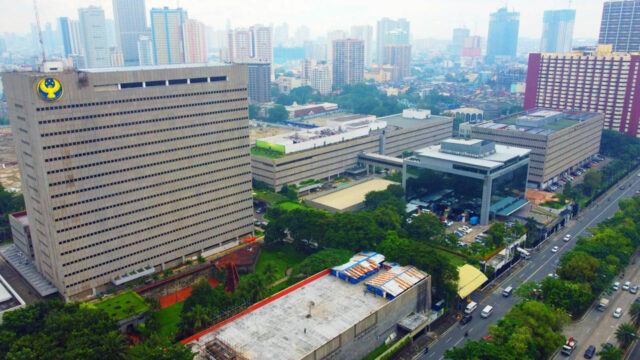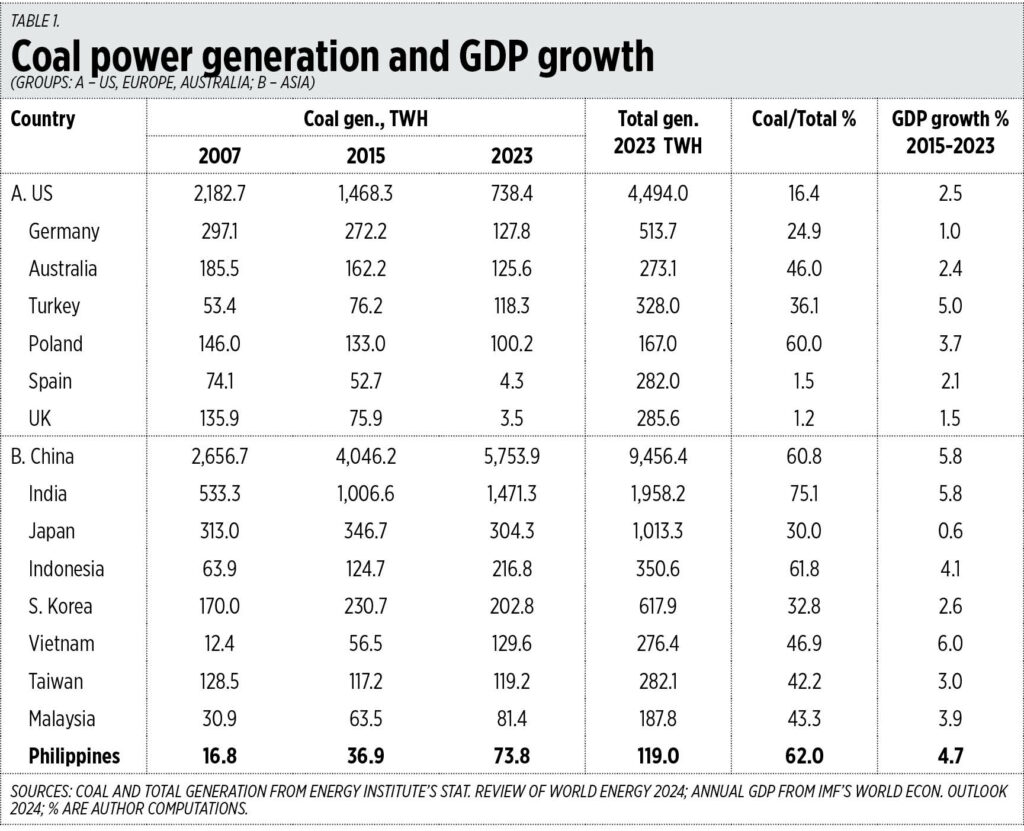By Aaron Michael C. Sy, Reporter
THE INSURANCE industry is expected to perform better this year driven by the life sector, but the health maintenance organization (HMO) and pre-need industries could continue to face challenges.
Finance Secretary Ralph G. Recto said the sector’s 2025 performance “will be better” than 2024 as rising incomes could boost demand for protection products to hopefully push up the country’s insurance penetration rate.
“For as long as productivity and incomes increase, there will be more demand for insurance products,” Mr. Recto said.
 As of end-September 2024, the Philippine insurance sector’s combined premium income grew by 13.45% year on year to P328.55 billion, driven mainly by the life segment, data from the Insurance Commission (IC) showed.
As of end-September 2024, the Philippine insurance sector’s combined premium income grew by 13.45% year on year to P328.55 billion, driven mainly by the life segment, data from the Insurance Commission (IC) showed.
However, insurance penetration, or premium volume as a share of gross domestic product (GDP) or the contribution of the insurance sector to the national economy, remained low at 1.74% in the period.
Enrico P. Villanueva, a senior lecturer at the University of the Philippines Los Baños Economics Department, noted that this is lower than the global average of roughly 7%.
He said the life insurance sector could continue to drive the industry’s growth this year amid high sales of variable unit-linked or universal life (VUL) products. VULs are policies that combine life insurance and investment components.
“Variable universal life insurance continues to dominate the life insurance market, accounting for 65% share of premia in 2024. This trend is likely to continue with the way many insurance agents are positioning VUL as an investment product, rather than a life insurance product with investment components and tax advantages,” Mr. Villanueva said.
“Insurance penetration can therefore be overstated by customers getting several VULs for investment,” he said.
Variable life premiums earned by the sector increased by 12.63% to P171.06 billion in the nine months through September from the same period a year prior.
“The challenge for the industry and the Insurance Commission is to avoid and maybe sanction mis-selling and misrepresentation particularly for VUL, where overinsurance can happen in pursuit of investment and where customers are sometimes made to believe that certain returns are guaranteed,” Mr. Villanueva added.
Market risks associated with VUL products are sometimes not explained properly to customers, he said.
The Philippine Life Insurance Association (PLIA) said expectations of strong economic growth and VUL products will drive the sector this year.
“The industry looks to 2025 with optimism, banking on a recently adjusted 5.9% GDP growth forecast by the World Bank. With the bulk of the industry’s total premium coming from variable unit-linked products, a favorable economic environment provides inherent growth opportunities for continuing uptake of VUL products with their unique combined protection and investment features,” PLIA said in an e-mail interview.
However, domestic and external developments involving geopolitics could cause market volatility, which may affect the financial services sector, investments, and overall economic stability, it said.
The industry’s shift to new reporting rules will also pose a challenge as companies are struggling to adopt the International Financial Reporting Standard 17 (IFRS 17), it added.
“One of the other key challenges confronting the industry is the fact that about two-thirds of the life insurance market players would likely not be able to switch over to the mandatory IFRS 17 reporting by Jan. 1, 2025,” PLIA said.
“Final prescriptions from the IC are expected to be issued soon enough.”
The International Accounting Standards Board in 2017 prescribed IFRS 17 for insurance contracts. The standards provide updated principles for the recognition, measurement, presentation and disclosure of insurance contracts in firms’ financial statements.
NONLIFE SECTOR
Meanwhile, the nonlife industry expects strong economic growth, better awareness about insurance products, and technology to drive its expansion in 2025, the Philippine Insurers and Reinsurers Association (PIRA) said.
“By 2025, the Philippine nonlife insurance industry is poised for growth, complemented by an expanding economy, increasing consumer awareness, technological innovation, and a focus on sustainability. Insurers that adapt to these trends and leverage technology while maintaining strong regulatory compliance can expect to thrive in this evolving landscape,” PIRA Executive Director Michael L. Rellosa said.
The nonlife industry’s net premiums written increased by 10.19% year on year to P53.13 billion at end-September 2024.
Philippine economic growth, which is expected to be driven by recovery in key sectors such as services, manufacturing, and infrastructure, will lead to more disposable income for consumers, which would translate to higher demand for nonlife insurance products, Mr. Rellosa added.
Growing awareness about the need for insurance protection amid increased natural disasters and health concerns could also boost demand.
“This push for financial literacy could result in a broader customer base for nonlife insurance products, especially among younger demographics,” he said.
The growth in insurance technology will also boost sales amid improved underwriting processes, claims handling, and customer service.
Other opportunity areas for nonlife insurers include risk management and mitigation for climate-related risks, products offering protection related to e-commerce, health services, and cyber insurance, and microinsurance, Mr. Rellosa said.
“Partnerships between traditional insurers and technological firms could likewise create new offerings that cater to niche markets.”
Mr. Recto likewise said that microinsurance could be a growth driver for the Philippine insurance industry.
“The Philippines is a sachet economy, so your insurance also has to be in a sachet form. So, they’ll have to innovate. They’ll have to adapt to the market. I think there’s a lot of opportunities for insurance. Our penetration rate is so low, but you have to offer the right products,” he said.
Takaful or Islamic insurance is also a growth area for the Philippine insurance sector, industry officials said, amid the country’s large Muslim population and regulatory support for these products.
Takaful is a type of Islamic insurance where members contribute a certain sum of money to a common pool. Takaful insurance needs to be compliant with Shari’ah law, which prohibits riba (interest), al-maisir (gambling), and al-gharar (uncertainty) principles.
In 2024, Pru Life Insurance Corp. of UK Philippines (Pru Life UK) was granted the first takaful license in the country, followed by Etiqa Life & General Assurance Philippines, Inc.
Pru Life UK has said it aims to launch its first Islamic Insurance product in the first quarter of 2025.
However, Mr. Rellosa said knowledge gaps on takaful insurance still need to be addressed.
“While there are promising signs for the growth of takaful in the Philippines, successful implementation will require concerted efforts from stakeholders, including regulatory bodies, financial institutions, and the community. If these efforts are made, Takaful could indeed take off and play a significant role in the financial landscape of the Philippines,” he said.
HMO, PRE-NEED SECTORS
However, the insurance industry’s outlook could be weighed down by troubled HMO and pre-need companies as some of these firms have experienced challenges in meeting capital and actuarial reserve requirements and have been closed down or stopped from doing new business as a result, Mr. Villanueva said.
“The higher capital requirements set by IC for HMOs can help weed out and prevent entry of companies with insufficient resources to provide the service. More than the increase in absolute capital requirements, the IC should regularly review companies who fail to set aside adequate reserves for insurance contract liabilities. Deficit in reserve is a major cause and indicator for Philippine insurance companies that went bankrupt,” Mr. Villanueva said.
The pre-need industry saw its premium income decline by 2.5% year on year to P16.287 billion as of September 2024 as players sold fewer plans.
Meanwhile, the HMO industry posted a net income of P800.86 million at end-September, rebounding from the P2.15-billion net loss a year prior amid higher revenues.
Insurance Commissioner Reynaldo A. Regalado has said the IC will likely delay the implementation of the proposed hike in HMOs’ minimum capital requirements.
The IC in July 2024 issued a draft circular that proposed to raise the minimum paid-up capital of HMOs to P50 million by end-2024 from the current P10 million. Meanwhile, new HMOs must put up at least P100 million in capital.
By end-2025, all HMOs should have at least P100 million in paid-up capital under the proposal. This would be increased to P200 million by end-2028, to P350 million by end-2031 and to P500 million by end-2034, based on the proposal.





















